Which type of entity must reference another entity for its data to be meaningful?
Consider the following table as well as the Dept1_Parts and Dept2_Parts relations shown in the exhibit: Which of the following relational algebraic expressions would result in the given table?

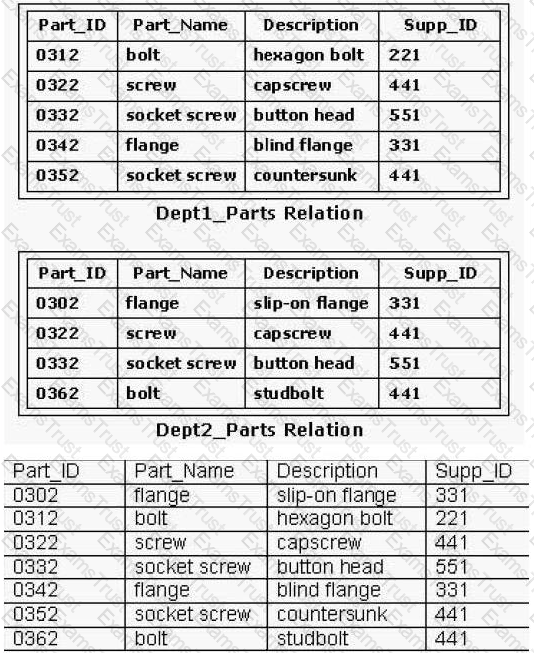
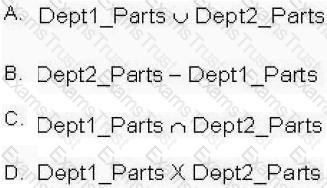
Which of the following definitions applies to all types of databases?
Consider the relational database shown in the exhibit.
What is the foreign key in this database?
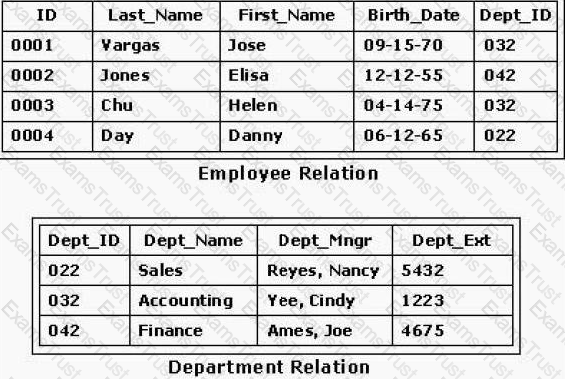
The creation of intermediate entities occurs during the logical database design phase for an enterprise. It is used to resolve which types of relationships?
Consider the Information Engineering diagram shown in the exhibit for a building management company. Referential integrity must be maintained such that a building cannot be deleted when it has residents. Building_ID, R_ID, Room_Count and Room_Num are integer numbers, whereas Bldg_Name, Location and Res_Name are all represented by variable-length strings with a maximum of 20 characters. Which SQL statement best implements the relations shown in this diagram?

Which mechanism provides database users with controlled access to the database through the use of virtual tables?
Which of the following best describes the two-tier database architecture?
The exhibit shows a table called Recreation Relation that relates a unique student identification number and a sports activity with a fee for participating in that activity. The Student_ID and Activity columns in the table are used together as a composite key. Which statement about the relation is correct?
Which subset of Structured Query Language (SQL) is used to perform operations such as data retrieval or deletion on the data contained in a database?
The exhibit shows a relation for a company projects. Which candidate key(s) would best serve as the primary key for this relation?

Consider the entity-relationship (ER) diagram shown in the exhibit. What do the characters at the ends of the connecting line indicate?

Consider the Dept1_Parts and Dept2_Parts relations shown in the exhibit. Which of the following SQL statements would create a set difference of the two relations with the widest variety of Structured Query Language dialects?
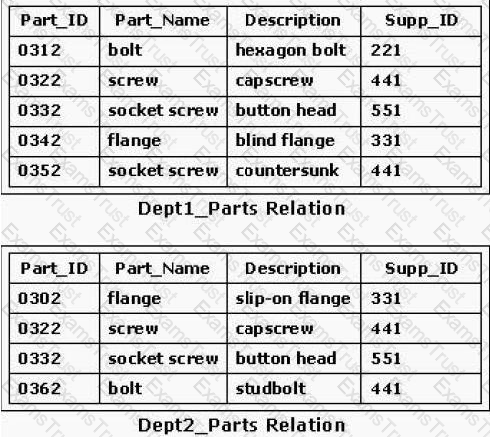
Consider the Recreation relation shown in the exhibit. You need to apply a SQL statement to the
Recreation relation that will return the following data:
Which SQL statement applied to the Recreation relation will return this data?
Consider the following relations shown in the exhibit. Which of the following SQL statements would return the Customers2 relation from the Customers relation?
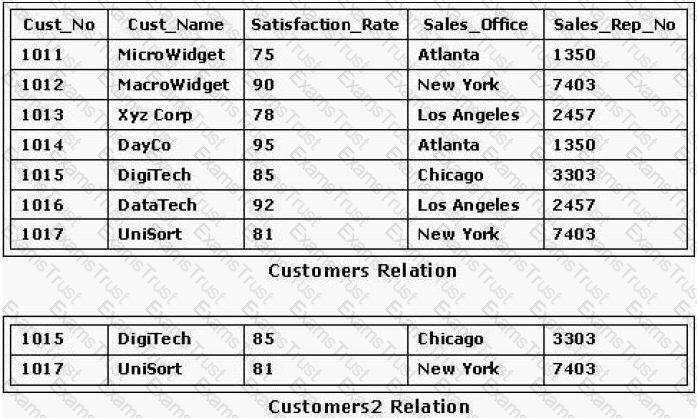
Consider the relations shown in the exhibit. Which of the following SQL statements would enter data from the Customers relation into the Atlanta_Customers relation?
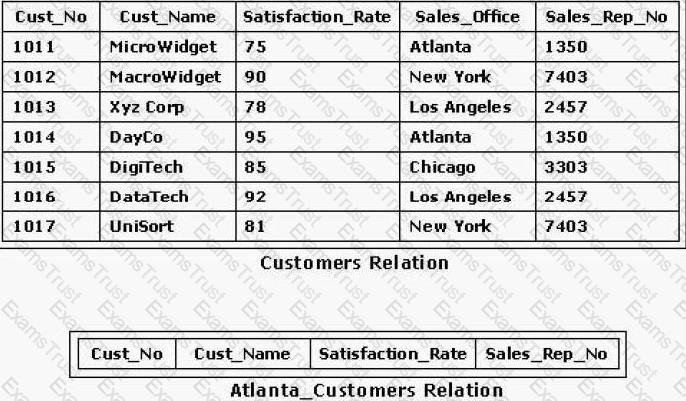
What is the highest normal form of the relation(s) shown in the exhibit?
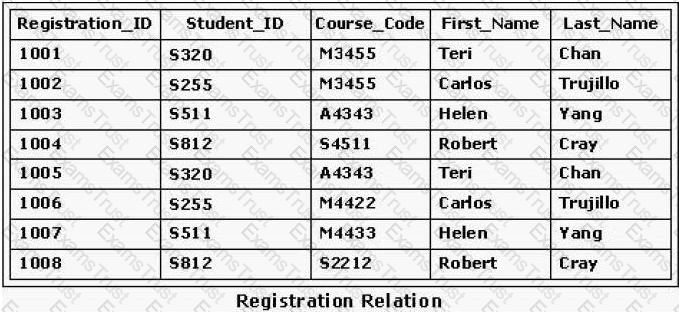
Which process is used to prevent the current database operation from reading or writing a data item while that data item is being accessed by another operation?